
What Is the SAT Essay?
College Board
- February 28, 2024
The SAT Essay section is a lot like a typical writing assignment in which you’re asked to read and analyze a passage and then produce an essay in response to a single prompt about that passage. It gives you the opportunity to demonstrate your reading, analysis, and writing skills—which are critical to readiness for success in college and career—and the scores you’ll get back will give you insight into your strengths in these areas as well as indications of any areas that you may still need to work on.
The Essay section is only available in certain states where it’s required as part of SAT School Day administrations. If you’re going to be taking the SAT during school , ask your counselor if it will include the Essay section. If it’s included, the Essay section will come after the Reading and Writing and Math sections and will add an additional 50 minutes .
What You’ll Do
- Read a passage between 650 and 750 words in length.
- Explain how the author builds an argument to persuade an audience.
- Support your explanation with evidence from the passage.
You won’t be asked to agree or disagree with a position on a topic or to write about your personal experience.
The Essay section shows how well you understand the passage and are able to use it as the basis for a well-written, thought-out discussion. Your score will be based on three categories.
Reading: A successful essay shows that you understood the passage, including the interplay of central ideas and important details. It also shows an effective use of textual evidence.
Analysis: A successful essay shows your understanding of how the author builds an argument by:
- Examining the author’s use of evidence, reasoning, and other stylistic and persuasive techniques
- Supporting and developing claims with well-chosen evidence from the passage
Writing: A successful essay is focused, organized, and precise, with an appropriate style and tone that varies sentence structure and follows the conventions of standard written English.
Learn more about how the SAT Essay is scored.
Want to practice? Log in to the Bluebook™ testing application , go to the Practice and Prepare section, and choose full-length practice test . There are 3 practice Essay tests. Once you submit your response, go to MyPractice.Collegeboard.org , where you’ll see your essay, a scoring guide and rubric so that you can score yourself, and student samples for various scores to compare your self-score with a student at the same level.
After the Test
You’ll get your Essay score the same way you’ll get your scores for the Reading and Writing and Math sections. If you choose to send your SAT scores to colleges, your Essay score will be reported along with your other section scores from that test day. Even though Score Choice™ allows you to choose which day’s scores you send to colleges, you can never send only some scores from a certain test day. For instance, you can’t choose to send Math scores but not SAT Essay scores.
Until 2021, the SAT Essay was also an optional section when taking the SAT on a weekend. That section was discontinued in 2021.
If you don’t have the opportunity to take the SAT Essay section as part of the SAT, don’t worry. There are other ways to show your writing skills as part of the work you’re already doing on your path to college. The SAT can help you stand out on college applications , as it continues to measure the writing and analytical skills that are essential to college and career readiness. And, if you want to demonstrate your writing skills even more, you can also consider taking an AP English course .
Related Posts
How to get ready for the digital sat on a school day.
Advanced Placement
What is AP English?
Taking the sat during school, how long does the sat take.
- Free Consultation
- The Spark Advantage
- Who We Serve
- About Admissions Consultants
- Testimonials
- College Admissions
- BS/MD Programs
- Art, Film & Music Schools
- Athletic Recruiting
- Learning Differences
- Private School Admissions
- Transfer Admissions
- Results by Year
- > College Admissions
Colleges That Require the SAT Essay (2020): A Complete List

The SAT essay has been through a lot of changes in recent years. In the new SAT, it exists as a separate section from the rest of the sections. You may have heard that not all schools require it, even the ones that require standardized test scores. Why is that? Also, just because it isn’t required, does that mean you don’t have to do it? And what’s a good essay score, anyway?
First, a few things about the SAT and ACT optional essays:
- The essay portion is scored completely separately from the Math and Reading sections (or, in the case of the ACT, the Math, Reading, and Science sections). That means your total score is not affected by your SAT Essay or ACT Essay (Writing) score.
- The SAT Essay is graded by two College Board readers who each give it a score between 1 and 4 on three different aspects: reading, analysis, and writing. That means the highest possible SAT Essay grade is an 8|8|8. The ACT Writing section is also scored by two readers, each out of 6 (for a high score of 12).
- You have the choice to take the SAT and ACT with or without the essay. If you opt to take the essay version, the test is slightly longer and slightly more expensive.
Second, the most important thing you can take away from this post is: don’t assume you need to take the SAT or ACT with the essay ! The number of schools that require it is low, and fewer and fewer schools are even recommending it. In recent years, schools like the California Institute of Technology, Claremont McKenna College, and the University of Michigan have all stopped asking for it. Princeton University started asking for a graded paper instead.
In short? Unless you know you’re going to score well, based on past experience or a diagnostic test, or you’re applying to certain schools, reconsider if preparing for the ACT/SAT Essay is a good use of your test prep time or if you should just skip it altogether.
Which Schools Want to See the SAT Essay/ACT Writing?
A very small number of schools outright require the SAT Essay or ACT Writing. They are:
- All of the University of California schools
- The United States Military Academy
- University of Montana-Western
- Martin Luther College
- Soka University of America
That’s it! Of course, the University of California system is huge and includes heavy hitters like Berkeley, Los Angeles, Santa Barbara, and more. If you’re considering applying to any of these schools, you’ll need to take the SAT Essay. Otherwise, unless these remaining schools are on your list, you don’t explicitly need to take the essay as part of the SAT.
However, in college admissions, required isn’t the end of the line. A good number of additional schools recommend the SAT Essay. For these schools, you won’t be automatically turned away without the essay, but it’ll help your chances to have it present.
You might be surprised to learn that most of the very top schools – Harvard University, Yale University, Brown University, etc. – are not terribly interested in the SAT Essay, even though they care quite a bit about your overall SAT score (or ACT score). That’s in part because highly selective schools ask high school applicants for extensive essays, which they use to evaluate applicant’s proficiency with written English.
The colleges and universities that recommend the SAT Essay are:
- Abilene Christian University
- Austin College
- Berry College
- Chapman University
- Colby College
- Concordia College-Moorhead
- Duke University
- Michigan State University
- Oregon State University
- Simmons University
- Stanford University
- Stony Brook University-SUNY
- Taylor University
- University at Buffalo-SUNY
- University of Minnesota-Twin Cities
If any of these schools are on your list, you should seriously consider including the essay in your SAT or ACT test prep plans. Still, there are a few things to keep in mind.
Should You Take the SAT or ACT Essay?
While you could, of course, make your decision about taking the SAT Essay based on the schools to which you know you’re applying, the majority of students take the SAT or ACT before they’ve finalized their college lists. For that reason, you may need to decide whether to take the essay without knowing whether you’re planning to apply to any of the above schools.
So, if you’re signing up for the SAT or ACT soon, consider the following:
Advantages of Taking the SAT Essay or ACT Writing
The biggest advantage to taking the SAT Essay is that you cover all your bases. If you decide to apply to any of the schools on the required or recommended lists, you won’t have to go back and take it again or risk rejection for not having taken it.
Similarly, the SAT Essay can provide another data point for admissions officers about the strength of your academic profile and application—if you do well. An above-average essay or writing score can help prove your writing abilities to colleges.
On the flip side, not taking the SAT Essay at all will limit the number of schools to which you can apply and be a competitive applicant. While many selective schools do not care about the essay, some do, and they’re always looking for a reason to reject applicants. Not having an essay score could sink your application at Duke or Stanford.
Disadvantages of Taking the SAT Essay or ACT Writing
The biggest potential downside to taking the SAT Essay is that you might not score well, and colleges that don’t require or recommend the essay will have a piece of information that doesn’t show you in your best light. Given that most schools don’t want the essay, having a poor SAT Essay score can be a risk that isn’t worth taking.
Another disadvantage to taking the essay or writing portion is that you’ll be in the room longer. Fortunately, both sections come at the end of their respective tests, so it won’t tire you out for the rest of the test, but knowing that you’re going to be there an extra hour can affect students’ performance on the sections that matter most.
Similarly, another advantage to not taking the Essay portion is not having to prepare for it! College Board and ACT readers are looking for very specific elements, so you’ll need to spend time preparing, just as you would for the other sections. That’s time that might be better spent on the rest of the test, schoolwork, or extracurricular activities.
Who Should Take the SAT with Essay?
Those are the big-picture considerations for whether to take the SAT Essay or ACT Writing section, but it’s also worth thinking about the specifics of your college application. Much like decisions about the SAT Subject Tests, it’s important to consider your unique application. Are you someone who should definitely take the SAT with essay? Probably? Or definitely not?
Do the colleges you’re interested in require the SAT Essay?
If you’re interested in any of the above colleges that have an SAT or ACT essay requirement, you should take it. It won’t be the most important factor in your application, but not having it will be a huge red flag to these schools that you’re not serious about them because you didn’t take the time to read and understand their requirements.
Do the colleges you’re interested in recommend the SAT Essay?
Require is easy; recommend is a bit more complicated. When it comes to college admissions, it’s best to take colleges at their word. So, while schools like Michigan State may not turn you away with no SAT Essay score, they’ll be disappointed you don’t have it, unless you have a compelling reason like financial hardship. Duke University in particular has dropped numerous hints that they frown upon applications without the essay section.
Note that even some test-optional schools, like Coby, recommend the SAT or ACT essay. Of course, these schools are test-optional, so you don’t need to submit any standardized test essay at all. But because they care so much about writing skills, they want to see the essay; otherwise, even if you have a very high score, they may be insufficiently impressed.
Are you applying to any scholarships that require an SAT with Essay?
On top of that, colleges may not be the only thing you’re applying to this year! Because standardized tests play a big role in many scholarships – both offered by colleges and by external institutions – you should always check to see if any scholarships for which you’re planning to apply require you to submit SAT Essay or ACT Writing score reports.
Will the SAT Essay enhance your application?
Lastly, if you’re someone who excels in writing and feels comfortable with the SAT Essay, you might decide that taking it will boost your application! Although the essay won’t be factored into your total SAT score, it may still make a positive impact if you struggle in other areas. For some students, a writing test is something they definitely want colleges to see!
Final Thoughts
The most important thing to keep in mind about the writing sections of the SAT and ACT is that you need to do what’s best for your college goals and strategy. Remember that you don’t need to do the Essay section at every test date, so it may be that you want to take a first pass at the test and decide about the essay later. Or, you may know that it’s going to be required by one or more of your colleges, so you want to get a jump right away.
At the end of the day, wherever you’re applying, the SAT Essay or ACT Writing is just one part of your application, one that seems to hold less importance every year. While it’s important to take all parts of the process seriously, this isn’t one of the ones worth stressing about.
Subscribe to our newsletter for college admissions news
Related articles from the spark admissions blog.

Harvard Acceptance Rate & Admission Requirements Guide
Categories: College Admissions , Ivy League Admissions

Which Colleges and Universities Will Be Test-Optional for the Class of 2025?
Categories: College Admissions

Which Colleges and Universities Will Be Requiring the SAT or ACT for the Class of 2025?
Spark admissions has the highest college admissions success rate in the country..
Contact us to learn more about our admissions consulting services.
Schedule Your Free Consultation
What are your chances of acceptance?
Calculate for all schools, your chance of acceptance.
Your chancing factors
Extracurriculars.
The SAT Writing Section (Essay): Here’s What You Need to Know

Is your SAT score enough to get you into your dream school?
Our free chancing engine takes into consideration your SAT score, in addition to other profile factors, such as GPA and extracurriculars. Create a free account to discover your chances at hundreds of different schools.
The SAT recently revamped itself to more accurately test what students learn in school. The new version is less deliberately tricky and confusing, but it’s still a challenging, exhausting test. Let’s say you’ve taken both the ACT and the SAT and you perform better on the SAT. Now that you’ve chosen it as your go-to test, how do you get through the essay portion, especially if you hate writing?
Fun fact: the SAT has plenty of new practice tests , which include essays. For the purposes of this post, I’ll be working from this practice essay , so it might be useful to have it open as you read. We’ll go through what’s expected, what scoring looks like, and how to go about writing the best essay you can.
Understand What You’re Being Asked to Do
The new SAT no longer asks you to make up ideas and references from scratch (which, honestly, is probably for the best). Instead, it provides you with an essay and asks you to analyze it, much in the same vein as an in-class analytical or an AP English Language essay.
The Assignment
The assignment reads as follows. At the top you’ll see a generic introduction for what to look for as you read:
As you read the passage below, consider how (the author of the passage) uses:
- evidence, such as facts or examples, to support claims.
- reasoning to develop ideas and to connect claims and evidence.
- stylistic or persuasive elements, such as word choice or appeals to emotion, to add power to the ideas expressed.
Then, at the bottom, the instructions get specific. For this essay, they read like this:
Write an essay in which you explain how Bobby Braun builds an argument to persuade his audience that the US government must continue to invest in NASA. In your essay, analyze how Braun uses one or more of the features listed in the box above (or features of your own choice) to strengthen the logic and persuasiveness of his argument. Be sure that your analysis focuses on the most relevant features of the passage. Your essay should not explain whether you agree with Braun’s claims, but rather explain how Braun builds an argument to persuade his audience.
What does this mean? Essentially, as you read, pick out the techniques the author uses to make his or her point, then write a detailed essay that covers a couple of the main ones. Brush up on your knowledge of literary terms and devices well in advance of writing the SAT essay. You don’t have to know them all, but know the most commonly used ones really well (tone, diction, imagery, simile/metaphor, allusion, rhetorical question, anecdote, and symbolism, to name a few) so you can rely on those. In an argumentative essay, like this one, an author will always use tone, diction (choice of words), and some kind of persuasion technique (Logos? Pathos? Ethos? Anecdote? etc.).
How is the essay scored? Two testers will read your essay and will provide a score of 1-4 on three different benchmarks: reading, analysis, and writing.
Did the writer understand the content? Did they quickly summarize the argument/point and then move quickly into their interpretation of it? Did they paraphrase and directly quote?
Did the writer not only identify the right literary terms/devices but assess their uses effectively? In other words, did the writer understand why the author used those devices and say so? Did the analysis integrate into the rest of the essay?
Is there a strong thesis, body paragraphs for each device, and a quick conclusion? (More on organization below.) Is the writing “strong,” i.e., sentence variety, no unnecessary words or repetition, strong words, and sophisticated reasoning?
The testers’ scores are then added together for an aggregate final score. So, a top score would be 8/8/8.

Discover how your SAT score affects your chances
As part of our free guidance platform, our Admissions Assessment tells you what schools you need to improve your SAT score for and by how much. Sign up to get started today.
Final Thoughts
Unless you’re being given extra time, you have exactly 50 minutes to complete the essay. This sounds like a lot (and it’s more than it used to be), but don’t be fooled. You’ll use the time.
Students with special accommodations might be able to take the test on a computer, but otherwise it’s a written test. Your test booklet will be scanned into a computer. If you make a mistake, don’t erase your work, because it causes smudges and can make it hard for the tester to read. Simply cross out and rewrite. The testers are trained not to read crossed-out material. If you’ve been told your handwriting is impossible to read, write a little more slowly than you might otherwise. Choose the style that’s more legible for you: print or cursive. When you write practice tests, give it to someone and ask if they can read it.
You’ll take the SAT essay last, after every other section has been completed. So you’ll be exhausted. There’s no way around that, unfortunately, beyond bringing snacks and water on test day and walking around during breaks to take the focus off your brain for a couple minutes. Practice is key; you’ll want to be able to read an essay quickly, pull out devices, and write a straightforward essay with a minimum of confusion and anxiety. Only practice and memorization of the right information will get you there.
As you prepare to take the SAT, take a look at some example essays that scored highly. It won’t be the same subject matter, but the structure and language will be aspects you can emulate.
Read with the Assignment in Mind
Imagine that your proctor has told you to turn to the essay section. You already know the basic assignment, so you can actually skip the top introduction and dive right in to the essay. Don’t get bogged down with unfamiliar words or the most complex sentences. You don’t need to absorb every single word of the essay. Read to find devices you can use. Circle them and ID them as you go. Don’t be picky right away—just observe and note what you see.
Go ahead and skim the bottom instructions, but even then the first sentence is the only really important one. In this case, the gist is: how does Braun persuade his audience to invest in NASA? Then, go back to the devices you found, and pick out the three strongest and/or most used devices to structure your essay. Can’t find three? Remember, an author always uses tone (point of view) and diction (word choice) so those are two easy ones if you’re stuck.
The process of reading and pulling out devices should take no more than eight minutes.
Make a Quick Outline
I know this one sound counterintuitive, given what I said about time limits, but bear with me. Just starting to write without a clear path is hugely problematic for timed essays. Even the best writers make a mental note of their general direction. Without planning, you might change directions mid-essay, forget your thesis and end up arguing something else, or wander off completely without realizing it.
The outline can be short and sweet. For example, with this practice essay, it could look like this:
Intro: Braun argues that continuing to invest in space tech and research keeps us competitive in the world economy. Devices: logos, imagery, allusion
Body 1: Logos (logic): paragraph 3, 5, 7
Body 2: Imagery: paragraph 4, 6
Body 3: Allusion: paragraph 8
Don’t even bother to include your conclusion in your outline. It’s pretty much the same content as your intro. Also, remember that you don’t need to tackle every aspect or device in the essay. Highlight where your devices are, then focus your analysis to those sections. In the outline above, I’ve structured the devices so that you’re going through the essay in almost chronological fashion. You don’t have to do this, but it makes the essay-writing a bit easier.
The process of outlining should take no more than two minutes.
Write Quickly but Methodically
Don’t waste a lot of breath with a big, drawn out introduction. State the argument of the author in one sentence, then your thesis, which should be a list of the three devices you plan to use. Keep it simple and easy, then move on.
For each body paragraph, make a quick topic sentence explaining which device you’re analyzing. Spend one sentence (ONLY one) summarizing how the author is using the device. Begin to use quotes or paraphrase; after each example, analyze why the author uses the device and the effect it has. About three quotes or examples are usually standard. Then, at the end of the paragraph, use one sentence to sum up the effect the device has on the whole essay. Use sample essays for examples of this structure.
See the numbers at the side of each paragraph? When you quote directly or summarize directly, put the number of the paragraph in parenthesis afterwards to cite where you’re getting the information from.
For your conclusion, simply restate what you’ve said before. If you’re feeling extra-confident, feel free to add a key takeaway from the analysis, but it’s not necessary. So, your conclusion can be two sentences just like your intro.
What if your writing style isn’t advanced or similar to the example essays? Work with a teacher or tutor who can help you develop your skills if you have the time. If not, just write simply and clearly. Don’t use overly technical words. Don’t make really long sentences just for the sake of doing so. Even simple, forceful language can be effective so long as your argument is good. So focus your attention on ensuring that you know what good analysis is and how to replicate it.
You’ll have 35 minutes to write. Keep an eye on the clock, but mostly just focus on writing quickly and clearly.
Leave a Few Minutes for Proofreading
Again, I know you’ll be flying through this essay at lightning speed to get everything done effectively. But this one’s important too. When you write quickly, grammar and spelling can fall by the wayside. That’s totally normal, so don’t freak out. But you will be graded on such aspects in your final score, so leave 5 minutes max at the end to skim through your essay, pinpoint where you made mistakes, cross out the word or phrase, and write the correct word or phrase above it. Try to make corrections clearly so that the tester knows which version to read.
And that’s it! Easy, right? (Totally kidding.) As with everything else, practice will help. If you’re not already doing this kind of essay in class, do a few practice essays at home. Make sure you do the EXACT process start to finish: time yourself, write an outline, and so on. Part of success is building the muscle memory to go into the essay with a solid base of experience and confidence that you’ll succeed.
Want to know how your SAT score impacts your chances of acceptance to your dream schools? Our free Chancing Engine will not only help you predict your odds, but also let you know how you stack up against other applicants, and which aspects of your profile to improve. Sign up for your free CollegeVine account today to gain access to our Chancing Engine and get a jumpstart on your college strategy!
Related CollegeVine Blog Posts

What's on the SAT
Here's what's on each section of the SAT and how it's structured.

Choose Your Test
- Search Blogs By Category
- College Admissions
- AP and IB Exams
- GPA and Coursework
The Ultimate Guide to the New Digital SAT Format

When the College Board rolled out its new digital SAT format in spring 2023 for international students and in March 2024 for U.S. students, it was one of the most significant changes the company has made to the standardized test in its 97-year history. This major transition is intended to make the exam more equitable and to reduce test-taking anxiety by aligning the format with how students are already learning online.
But what precisely is changing? There’s much to know beyond the move from analog to digital. In this article, we’ll provide everything you need to know about the new SAT format so you can prepare effectively.
Key Differences in the New Digital SAT Format
Many aspects of the new digital SAT will not be changing from those of the pencil-and-paper version. For example, the test assesses the same basic skills, it will still be scored on a 1600-point scale , you’ll still need to take the exam at an official testing center, and you’ll still be able to take extra time or use assistive technology if you’re approved for accommodations .
But the new test promises several important changes you’ll want to be ready for. Here are the six major differences between the current and new versions of the SAT.
Computers Are Replacing Pencil and Paper
Forgetting their required two No. 2 pencils on the day of the paper exam has led to outright panic for test takers. But with the new format, bubble answer sheets will soon be a thing of the past because 100% of the SAT will be administered on a computer .
When you register, you can choose to take the SAT on a testing center computer or to bring a laptop or tablet that you own or that you’ve borrowed from your school, family, or friends.
If you’re bringing your own device, it must be able to connect to Wi-Fi. It must also be running approved operating systems and have a certain amount of free space available; you can review the specifications for individual devices here . Finally, make sure you’ve downloaded the Bluebook testing software and fully charged your computer the morning of the test .
Whether you’re using a testing site/school device or your own, you’ll also be allowed to bring your own mouse. And if you’re using a tablet, you can bring a keyboard, although you cannot use an external keyboard if using a laptop. If you’re using a school- or testing site–provided computer, you’ll just need to check that any external advice you plan to bring is compatible.

If you don’t have access to a computer and can’t borrow one the day you take the SAT, the testing company has you covered. When you register, you may ask that a computer issued by the College Board be shipped to the testing center . You’ll need to request it at least 30 days before the exam date and supply the name of an adult (e.g., a teacher, counselor, school administrator, or advisor) to vouch for you.
Should you lose power or your Internet connection during the test, all is not lost! The online SAT saves your work frequently, so you won’t sacrifice any progress you’ve made after you’ve reconnected.
Calculator Use
Speaking of devices, the print version of the SAT currently allows calculators on only one portion of the two-part Math section. By contrast, the digital SAT format will allow you to use a calculator on the entire Math section . And like your No. 2 pencil, you won’t need to remember to bring your calculator—or bring the right kind—because the digital SAT provides an onscreen calculator if you don’t already own one.
Later in this post, we’ll talk more about what to expect of the Desmos Calculator embedded in the testing app. But if you prefer to bring your own graphing or scientific calculator, just make sure it’s on the College Board’s list of accepted devices . Note that you’re only allowed to use battery-operated, handheld calculators, and you will be seated away from other test takers if your device has characters that are one inch or higher or has a raised display that could be visible to the other students.

The Test Will Now Adapt to You
The online SAT will be whittled down from its current three sections (Reading, Writing and Language, and Math) to two: Reading and Writing is the first while Math is the second. Each section will be further divided into two parts, called modules .
You’ll answer questions in the first module before moving on to the second. But the questions in the second module will change for each test taker depending on how they performed on the first module .
Thanks to this new adaptive format, the digital SAT will be more tailored to your individual needs and improve how precisely the exam assesses your skills.
A Shorter Test
With fewer sections and a more adaptive format, the new digital test will be significantly shorter. The current pencil-and-paper exam takes approximately 3 hours; the digital SAT will take 2 hours and 14 minutes and offer more time to answer each question .
For example, passages in the Reading and Writing section will be shorter, and you’ll have to answer only a single question per passage. And because questions across the entire test will be more direct and concise, you’ll be better able to concentrate on each question and have more time to answer it.
You’ll Get Your Scores Back Sooner
With the new digital format, you’ll receive your SAT scores within days, not weeks . Knowing how you performed sooner means you’ll have extra time to determine which scores to send and to which schools . It also means you can take the SAT later and still meet college admission deadlines—and therefore have more time to study for the test.
Alternatively, quicker scoring is a benefit if you’re planning to take the SAT multiple times to achieve the highest scores possible: you’ll have less time to wait to decide whether another try is necessary.

Increased Security
If a single test taker’s paper form has been compromised, the College Board will sometimes cancel the scores of all the students who were taking the exam at the same time and location. Moreover, test leaks and cheating scandals in recent years have led to delays and cancellations of score reports. But the new online SAT will offer far greater security: each student receives a unique digital test form, which deters the sharing of answers and makes cancellation far less likely.
The Content and Timing of the Digital SAT
Now that you know the overarching changes between the paper and digital versions of the SAT, let’s delve into the new SAT’s content, structure, and timing.

The Reading and Writing Section
The current version of the SAT features a 65-minute Reading section of 52 questions and a 35-minute Writing and Language (W&L) section of 44 questions. In the combined Reading and Writing (R&W) Section of the new digital SAT, there will be two modules, each taking 32 minutes and comprising 27 questions.
| Paper SAT | Digital SAT | |
| Time allotted for the two sections/the entire section (in minutes) | 100 | 64 |
| Number of modules | 2 | 2 |
| Number of questions per module | Reading: 52 W&L: 44 | R&W 1: 27 R&W 2: 27 |
| Time allotted per module (in minutes) | Reading: 65 W&L: 35 | R&W 1: 32 R&W 2: 32 |
| Number of reading passages | Reading: 5 W&L: 4 | R&W 1: 27 R&W 2: 27 |
| Word count of each reading passage | 500–700 | 25–150 |
| Questions per reading passage | 10–11 | 1 |
The reading passages in the digital SAT will be shorter than those on the paper exam, and instead of answering multiple questions in response to a single passage, you’ll now answer only one. Just be aware that these shorter excerpts will be just as challenging to read, if not more challenging, than those used on the current paper test.
On the paper SAT, the Reading and Writing and Language sections are structured according to the topics represented by the passages. The five Reading excerpts focus on literature, history, science, another history topic, and another science topic—often in that specific order. The four Writing and Language excerpts focus on history, career, the humanities, and science—but their order can differ.

The new SAT will feature a greater range of topics, tones, and styles than the analog test, with more questions stemming from the humanities and a few poetry questions added (often by authors from the early 1900s and before). However, the passages and their corresponding questions will be grouped by the skill set they’re testing rather than by the reading topic . You can expect each Reading and Writing module on the digital SAT to assess these skills:
- Information and Ideas (12–14 questions): Use details from brief texts, tables, and infographics to determine the main idea, choose the best evidence to support a claim, answer comprehension questions, or infer the most logical way to complete an excerpt.
- Craft and Structure (13–15 questions): Define words and phrases that appear in lines of poetry or sentences of prose, evaluate how passages are making arguments, or connect ideas presented in two excerpts (e.g., determining whether one idea builds on another or whether two paragraphs are making similar or different claims).
- Expression of Ideas (8–12 questions): Select the transitional word or phrase that makes the author’s meaning clearer for readers, or use a short set of provided notes to decide which of the answers achieves a particular purpose (e.g., which answer represents a comparison, or which answer represents a contrast).
- Standard English Conventions (11–15 questions): Choose answers that reflect your knowledge of conventional grammar and mechanics.
The order and number of these types of questions will differ because, according to the College Board, each student will receive a unique test form.
The Math Section
In the analog version of the SAT, the Math portion comprises a 25-minute No-Calculator section of 20 questions and a 55-minute Calculator section with 38 questions. With the new digital SAT format, Math will be 70 minutes long and 44 questions, divided equally between two modules, and you can use a calculator on the entire section.
| Math Section | Paper SAT | Digital SAT |
| Time allotted for the entire section (in minutes) | 80 | 70 |
| Number of modules | 2 | 2 |
| Number of questions per module | No Calculator: 20 Calculator: 38 | Stage 1: 22 Stage 2: 22 |
| Time allotted per module (in minutes) | No Calculator: 25 Calculator: 55 | Stage 1: 35 Stage 2: 35 |
| Number of questions per type | Multiple choice: 45 Grid-in/student-produced response: 13 | Multiple choice: 33 Grid-in/student-produced response: 11 |
The digital SAT will no longer test reading skills in the Math section. The paper version of the Math section sometimes includes harder-to-understand word problems. The online format will instead feature more concise, straightforward questions that focus on your mathematical understanding rather than your reading ability.
The Math topics tested on the digital SAT remain the same as those in the paper test, but they’ve been renamed:
- Algebra (previously called Heart of Algebra; 13–15 questions): Develop, analyze, or solve linear equations and inequalities as well as systems of equations.
- Advanced Math (previously called Passport to Advanced Math; 13–15 questions): Create, interpret, or solve a variety of problem types, such as quadratic equations, polynomial operations, or absolute-value equations.
- Problem Solving and Data Analysis (no name change; 5–7 questions): Answer prompts about ratios, rates, or proportions; convert units; calculate percentages; analyze data with one or two variables; or infer data and evaluate claims from statistics.
- Geometry and Trigonometry (previously called Additional Topics in Math; 5–7 questions): Solve problems involving perimeter, area, or volume; angles, triangles, or trigonometry; and circles. The digital SAT will have nearly double the number of geometry and trigonometry questions as the paper version (15% of the section as opposed to the previous 8%).
As with the Reading and Writing section, the order and number of the prompt types will change for each student.
Within these four topics, you’ll also see two question formats:
- Multiple choice: You’ll select one out of four possible choices supplied on the test.
- Grid-in, aka student-produced, response: You’ll need to develop your own answer and then input your answers digit by digit rather than choosing from a group of possible solutions.
What Will the Digital SAT Format Look Like?
One great way to get an insider’s view of the new digital SAT is to take official practice tests on the College Board’s Bluebook app or on Khan Academy . The images below provide you with a quick preview of the new format.
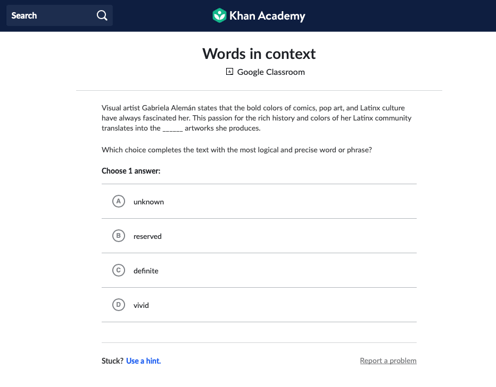
If you’re familiar with the SAT paper test, you’ll notice how the Reading and Writing prompt is much shorter. The same applies to Math questions like this one:
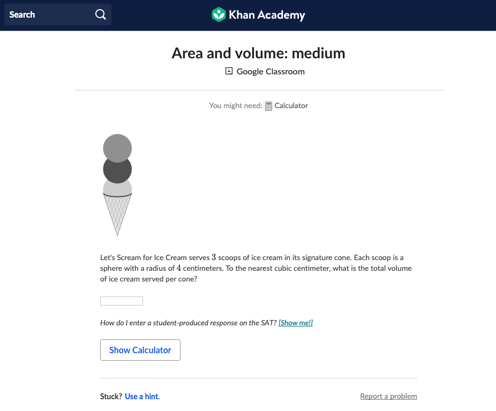
Note, too, how you have to answer only one question per passage or graph.
Tools Featured in the New SAT
When you take the new version of the standardized exam, you won’t be able to access any other apps while testing. However, the digital SAT platform will include a host of helpful tools to help you navigate the exam. Let’s take a look at the test’s new and updated features.
The Desmos Onscreen Calculator
If you own and regularly use a personal handheld calculator, you’re allowed to bring it to the test if it’s an approved device . But built into the Bluebook testing application is a Desmos graphing calculator that you can use on the entire Math section . It allows you to graph lines and curves, plot points, locate x- and y-intercepts, and complete various other calculations.
If you’re planning to use the Desmos calculator, experiment with the device online and in practice tests to familiarize yourself with its various capabilities well before test day. The embedded onscreen device also includes updated accessibility features, such as compliance with screen readers and other assistive technologies, so you’ll want to test out those elements as well if you’ll be using them.
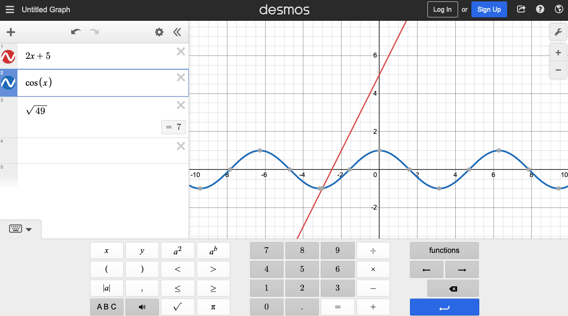
The Online Notepad
In Bluebook, you won’t be able to mark up graphs, charts, or diagrams in the test. But the digital SAT features an online notepad if you tend to do scratch work when completing math problems . Alternatively, you can bring a pen or pencil, and the proctor will provide paper if requested.
You won’t receive credit for any of your scratch work. But using the online notepad or provided paper can be useful for sketching out calculations or double-checking your solutions.
The Countdown Clock
The digital SAT format will feature a countdown timer at the top of your testing screen so that you’ll know how much time is remaining in any given stage. If the clock causes you anxiety, you can choose to hide it. Whether on screen or hidden, you’ll be alerted when you have five minutes remaining on the module.

Mark-for-Review and Strikethrough Tools
In older digital versions of certain standardized tests, such as the GRE, test takers were required to answer one question at a time before moving forward; you could not return to earlier questions, even in the same section. On the digital SAT, however, you can move back and forth between questions as long as they are in the current module.
The new format also features a tool that allows you to mark questions that you want to return to:
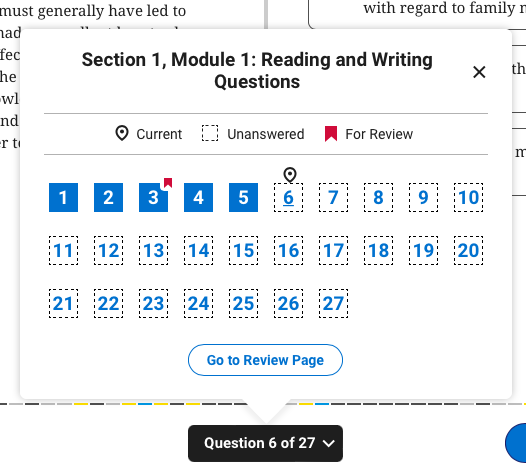
This can be a terrific time-saver: if you arrive at a prompt that’s challenging you, you can mark it, move on to other questions in the same stage, and then return to those you flagged after you’ve finished the easier prompts.
You’ll notice that you can also strike through answer options you know to be incorrect . So if you read through a question and can eliminate even one or two of the four possibilities but can’t quite choose between the remaining choices, you can strike through the incorrect options, mark the question for review, and then come back to it later when you have more time to think through it.
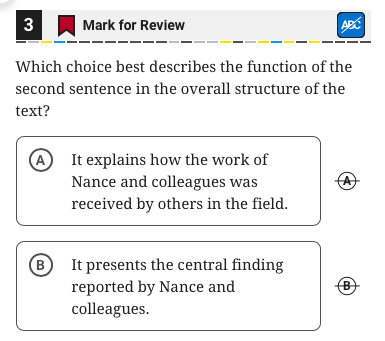
A Math Reference Popout
For the Math section, you won’t have to memorize common formulas because during the test, you’ll be able to access a reference popout. It includes reminders such as how to calculate the circumference or area of a circle, the hypotenuse of a right triangle, and the volume of cylinders and cones.
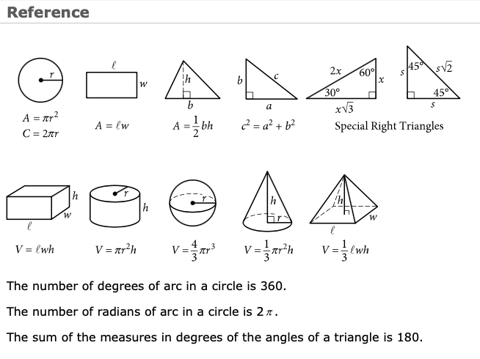
How Does the Adaptive Format Work?
The new digital SAT is shorter than the paper format because the exam adapts to your skills and abilities as you move through each module. Let’s briefly examine what this looks like.
The SAT’s digital format is organized in this way: Reading and Writing Module 1, Reading and Writing Module 2, Math Module 1, and Math Module 2 (there’s a break between the Reading and Writing section and the Math section). Every student will take the exam in this order.
Reading and Writing Module 1 contains easy, medium, and hard prompts. At the end of the first module, the test will use your performance to determine whether you’ll continue to an easier or more challenging version of Reading and Writing Module 2. The same concept applies to the Math section: Math Module 1 contains three levels of difficulty, and the exam will choose either an easier or harder version of Math Module 2 based on how well you did on the first Math stage.
Because the SAT adapts only twice (once between the two Reading and Writing modules and a second time between the two Math stages) rather than adapting with every question, the stakes are lower with each individual question. So you don’t need to stress out if you’re feeling flummoxed by any one particular prompt on the exam. The adaptive nature of the digital SAT also means your score will more accurately reflect your skills and knowledge.
Tips for Taking The Digital SAT
Getting acquainted with the new digital SAT format is one of the most important things you can do to prepare yourself for test day. Here are a few more tips for navigating the online SAT.
Use Practice Tests to Prepare
If you’re planning to take the digital SAT multiple times to improve your results, keep in mind that you won’t learn how many questions you got correct or incorrect in either section or how your score was consequently calculated. That’s because each student receives a unique test that adapts to their individual level, and the questions are weighted differently—your score isn’t based on a simple tally of right and wrong answers . Furthermore, the College Board plans to reuse questions from test to test, so to deter cheating, no student will have access to the questions on their individual tests after exiting the exam.
Because you won’t know how your score was tabulated or have access to the questions on your individualized SAT, you won’t be able to use any actual test to learn from your mistakes or determine which strategies worked. So if you’re looking to raise your results on the next actual test, you’ll need to use your practice tests to elevate your performance . As you study, mimic actual test-taking conditions by completing sample exams in a quiet room with no distractions, pay careful attention to answer explanations, diagnose areas you’ll need to drill on, and keep track of the strategies that work for you on correct answers.
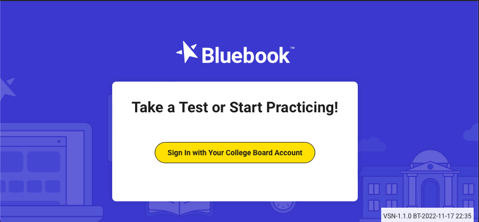
Focus on Working Swiftly but Accurately
Given that questions are weighted differently, your goal on testing day should simply be to answer as many questions correctly as you can within the allotted time .
For efficiency, memorize the directions for each type of prompt ahead of time so you can get to work immediately on the actual exam questions. But peruse each reading passage and math question carefully to make sure you know what it’s asking and what to think about as you’re answering.
Use the Embedded Tools
Unless you’re a mental math whiz, use the online notepad or the provided paper to run calculations and plot out notes or diagrams. Use the Desmos Calculator to solve more complex problems, but don’t lose precious seconds or minutes by using the calculator if you can confidently solve problems without it. And don’t forget to select the Reference icon if you need a quick refresher on common Math formulas.
Throughout both the Math and Reading and Writing sections, remember that you can mark difficult problems for review and come back to them after you’ve solved easier ones.
Use the Process of Elimination
On multiple-choice questions, it can sometimes be easier to identify incorrect answers than to determine the right ones, so use the Strikethrough tool to eliminate the ones you know are wrong. You might find that you land on the correct choice through a process of elimination. And since you earn points only for correct answers but never lose points for incorrect answers , narrowing your choices to two and then hazarding a guess means a greater probability for earning points than choosing randomly from all four possibilities.
Double-Check Your Work
If you finish any module early, take the time to double-check your answers, assuring that you’ve selected or typed in the exact answers you intended and revisited questions you were less certain about . On the two Math modules, you can also use the Desmos Calculator to make sure you’ve given reasonable responses to questions on which you didn’t initially use the embedded device. And for any grid-in/student-produced response questions, make sure you’ve input your answer accurately because there’s a greater possibility of error than on multiple-choice prompts.

We know that adjusting to a new format for the SAT can be stressful, but with a clear understanding of what to expect and careful practice, you can go into test day feeling prepared and confident. Happy studying, and we wish you all the best as you take on the new digital SAT!
What’s Next?
What counts as a great, average, or poor result on the new digital SAT? Our expert guides explain which scores to aim for and the minimum scores needed for college admission .
Do you need to take the digital SAT for college admissions? For the past 50+ years, universities have offered test-optional admissions. So should you even bother taking the digital SAT? Our post provides you with the information you need to decide whether you should go test optional .
Did you know that some schools guarantee you scholarships just for earning a specific SAT score? Check out our blog post on where to find and how to apply for these merit-based opportunities .

Trending Now
How to Get Into Harvard and the Ivy League
How to Get a Perfect 4.0 GPA
How to Write an Amazing College Essay
What Exactly Are Colleges Looking For?
ACT vs. SAT: Which Test Should You Take?
When should you take the SAT or ACT?
Get Your Free

Find Your Target SAT Score
Free Complete Official SAT Practice Tests
How to Get a Perfect SAT Score, by an Expert Full Scorer
Score 800 on SAT Math
Score 800 on SAT Reading and Writing
How to Improve Your Low SAT Score
Score 600 on SAT Math
Score 600 on SAT Reading and Writing
Find Your Target ACT Score
Complete Official Free ACT Practice Tests
How to Get a Perfect ACT Score, by a 36 Full Scorer
Get a 36 on ACT English
Get a 36 on ACT Math
Get a 36 on ACT Reading
Get a 36 on ACT Science
How to Improve Your Low ACT Score
Get a 24 on ACT English
Get a 24 on ACT Math
Get a 24 on ACT Reading
Get a 24 on ACT Science
Stay Informed
Get the latest articles and test prep tips!

Meilee Bridges earned her PhD and MA in English language and literature from the University of Michigan and graduated summa cum laude from the Honors English Program at Trinity University. A former professor turned professional writer and editor, she is dedicated to supporting the educational goals of students from all backgrounds.
Ask a Question Below
Have any questions about this article or other topics? Ask below and we'll reply!

SAT Essay Scores Explained
On january 19th, 2021, college board announced that they will no longer administer the sat subject tests in the u.s. and that the essay would be retired. read our blog post to understand what this means in the near term and what the college board has in store for students down the road., our articles on subject tests and the sat essay will remain on our site for reference purposes as colleges and students transition to a revised testing landscape..

Why are there no percentiles for the essay on an SAT score report?
No percentiles or norms are provided in student reports. Even colleges do not receive any summary statistics. Given Compass’ concerns about the inaccuracy of essay scoring and the notable failures of the ACT on that front, the de-emphasis of norms would seem to be a good thing. The problem is that 10% of colleges are sticking with the SAT Essay as an admission requirement . While those colleges will not receive score distribution reports from the College Board, it is not difficult for them to construct their own statistics—officially or unofficially—based on thousands of applicants. Colleges can determine a “good score,” but students cannot. This asymmetry of information is harmful to students, as they are left to speculate how well they have performed and how their scores will be interpreted. Through our analysis, Compass hopes to provide students and parents more context for evaluating SAT Essay scores.
How has scoring changed? Is it still part of a student’s Total Score?
On the old SAT, the essay was a required component of the Writing section and made up approximately one-third of a student’s 200–800 score. The essay score itself was simply the sum (2–12) of two readers’ 1–6 scores. Readers were expected to grade holistically and not to focus on individual components of the writing. The SAT essay came under a great deal of criticism for being too loosely structured. Factual accuracy was not required; it was not that difficult to make pre-fabricated material fit the prompt; many colleges found the 2–12 essay scores of little use; and the conflation of the essay and “Writing” was, in some cases, blocking the use of the SAT Writing score—which included grammar and usage—entirely.
With the 2016 overhaul of the SAT came an attempt to make the essay more academically defensible while also making it optional (as the ACT essay had long been). The essay score is not a part of the 400–1600 score. Instead, a student opting to take the SAT Essay receives 2–8 scores in three dimensions: reading, analysis, and writing. No equating or fancy lookup table is involved. The scores are simply the sum of two readers’ 1–4 ratings in each dimension. There is no official totaling or averaging of scores, although colleges may choose to do so.
Readers avoid extremes
What is almost universally true about grading of standardized test essays is that readers gravitate to the middle of the scale. The default instinct is to nudge a score above or below a perceived cutoff or midpoint rather than to evenly distribute scores. When the only options are 1, 2, 3, or 4, the consequence is predictable—readers give out a lot of 2s and 3s and very few 1s and 4s. In fact, our analysis shows that 80% of all reader scores are 2s or 3s. This, in turn, means that most of the dimension scores (the sum of the two readers) range from 4 to 6. Analysis scores are outliers. A third of readers give essays a 1 in Analysis. Below is the distribution of reader scores across all dimensions.
What is a good SAT Essay score?
By combining multiple data sources—including extensive College Board scoring information—Compass has estimated the mean and mode (most common) essay scores for students at various score levels. We also found that the reading and writing dimensions were similar, while analysis scores lagged by a point across all sub-groups. These figures should not be viewed as cutoffs for “good” scores. The loose correlation of essay score to Total Score and the high standard deviation of essay scores means that students at all levels see wide variation of scores. The average essay-taking student scores a 1,080 on the SAT and receives just under a 5/4/5.
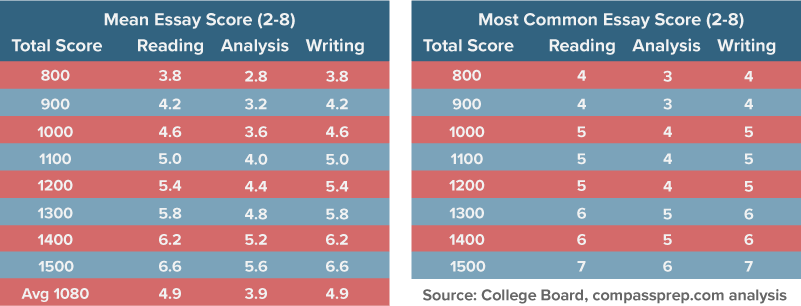
College Board recently released essay results for the class of 2017, so score distributions are now available. From these, percentiles can also be calculated. We provide these figures with mixed feelings. On the one hand, percentile scores on such an imperfect measure can be highly misleading. On the other hand, we feel that students should understand the full workings of essay scores.
The role of luck
What is frustrating to many students on the SAT and ACT is that they can score 98th percentile in most areas and then get a “middling” score on the essay. This result is actually quite predictable. Whereas math and verbal scores are the result of dozens of objective questions, the essay is a single question graded subjectively. To replace statistical concepts with a colloquial one—far more “luck” is involved than on the multiple-choice sections. What text is used in the essay stimulus? How well will the student respond to the style and subject matter? Which of the hundreds of readers were assigned to grade the student’s essay? What other essays has the reader recently scored?
Even good writers run into the unpredictability involved and the fact that essay readers give so few high scores. A 5 means that the Readers A and B gave the essay a 2 and a 3, respectively. Which reader was “right?” If the essay had encountered two readers like Reader A, it would have received a 4. If the essay had been given two readers like Reader B, it would have received a 6. That swing makes a large difference if we judge scores exclusively by percentiles, but essay scores are simply too blurry to make such cut-and-dry distinctions. More than 80% of students receive one of three scores—4, 5, or 6 on the reading and writing dimensions and 3, 4, or 5 on analysis.
What do colleges expect?
It’s unlikely that many colleges will release a breakdown of essay scores for admitted students—especially since so few are requiring it. What we know from experience with the ACT , though, is that even at the most competitive schools in the country, the 25th–75th percentile scores of admitted students were 8–10 on the ACT’s old 2–12 score range. We expect that things will play out similarly for the SAT and that most students admitted to highly selective colleges will have domain scores in the 5–7 range (possibly closer to 4–6 for analysis). It’s even less likely for students to average a high score across all three areas than it is to obtain a single high mark. We estimate that only a fraction of a percent of students will average an 8—for example [8/8/8, 7/8/8, 8/7/8, or 8,8,7].
Update as of October 2017. The University of California system has published the 25th–75th percentile ranges for enrolled students. It has chosen to work with total scores. The highest ranges—including those at UCLA and Berkeley—are 17–20. Those scores are inline with our estimates above.
How will colleges use the domain scores?
Colleges have been given no guidance by College Board on how to use essay scores for admission. Will they sum the scores? Will they average them? Will they value certain areas over others? Chances are that if you are worrying too much about those questions, then you are likely losing sight of the bigger picture. We know of no cases where admission committees will make formulaic use of essay scores. The scores are a very small, very error-prone part of a student’s testing portfolio.
How low is too low?
Are 3s and 4s, then, low enough that an otherwise high-scoring student should retest? There is no one-size-fits-all answer to that question. In general, it is a mistake to retest solely to improve an essay score unless a student is confident that the SAT Total Score can be maintained or improved. A student with a 1340 PSAT and 1280 SAT may feel that it is worthwhile to bring up low essay scores because she has previously shown that she can do better on the Evidence-based Reading and Writing and Math, as well. A student with a 1400 PSAT and 1540 SAT should think long and hard before committing to a retest. Admission results from the class of 2017 may give us some added insight into the use of SAT Essay scores.
Will colleges continue to require the SAT Essay?
For the class of 2017, Compass has prepared a list of the SAT Essay and ACT Writing policies for 360 of the top colleges . Several of the largest and most prestigious public university systems—California, Michigan, and Texas, for example, still require the essay, and a number of highly competitive private colleges do the same—for example, Dartmouth, Harvard, Princeton, and Stanford.
The number of excellent colleges not requiring the SAT Essay, though, is long and getting longer. Compass expects even more colleges to drop the essay requirement for the classes of 2018 and 2019. Policies are typically finalized in late spring or during the summer.
Should I skip the essay entirely?
A common question regarding SAT scores is whether the whole mess can be avoided by skipping the essay. After all, if only about 10% of colleges are requiring the section, is it really that important? Despite serious misgivings about the test and the ways scores are interpreted, Compass still recommends that most students take the essay unless they are certain that they will not be applying to any of the colleges requiring or recommending it. Nationally, about 70% of students choose to take the essay on at least one SAT administration. When looking at higher scoring segments, that quickly rises to 85–90%. Almost all Compass students take the SAT Essay at least once to insure that they do not miss out on educational opportunities.
Should I prepare for the SAT Essay?
Most Compass students decide to do some preparation for the essay, because taking any part of a test “cold” can be an unpleasant experience, and students want to avoid feeling like a retake is necessary. In addition to practicing exercises and tests, most students can perform well enough on the SAT Essay after 1–2 hours of tutoring. Students taking a Compass practice SAT will also receive a scored essay. Students interested in essay writing tips for the SAT can refer to Compass blog posts on the difference between the ACT and SAT tasks and the use of first person on the essays .
Will I be able to see my essay?
Yes. ACT makes it difficult to obtain a copy of your Writing essay, but College Board includes it as part of your online report.
Will colleges have access to my essay? Even if they don’t require it?
Yes, colleges are provided with student essays. We know of very few circumstances where SAT Essay reading is regularly conducted. Colleges that do not require the SAT Essay fall into the “consider” and “do not consider” camps. Schools do not always list this policy on their website or in their application materials, so it is hard to have a comprehensive list. We recommend contacting colleges for more information. In general, the essay will have little to no impact at colleges that do not require or recommend it.
Is the SAT Essay a reason to take the ACT instead?
Almost all colleges that require the SAT Essay require Writing for ACT-takers. The essays are very different on the two tests, but neither can be said to be universally “easier” or “harder.” Compass recommends that the primary sections of the tests determine your planning. Compass’ content experts have also written a piece on how to attack the ACT essay .
Key links in this post:
ACT and SAT essay requirements ACT Writing scores explained Comparing ACT and SAT essay tasks The use of first person in ACT and SAT essays Understanding the “audience and purpose” of the ACT essay Compass proctored practice testing for the ACT, SAT, and Subject Tests
About Art Sawyer
Art graduated magna cum laude from Harvard University, where he was the top-ranked liberal arts student in his class. Art pioneered the one-on-one approach to test prep in California in 1989 and co-founded Compass Education Group in 2004 in order to bring the best ideas and tutors into students' homes and computers. Although he has attained perfect scores on all flavors of the SAT and ACT, he is routinely beaten in backgammon.
Popular Posts
- National Merit Semifinalist Cutoffs Class of 2025 September 9, 2024
- SAT and ACT Policies and Score Ranges for Popular Colleges and Universities August 30, 2024
- Colleges that Allow Self-Reporting of SAT and ACT Scores November 20, 2023
- National Merit Scholarship Program Explained October 4, 2023
- Using digital PSAT Scores to Compare SAT and ACT October 23, 2023
Recent Posts
- What to Expect on the Digital PSAT September 13, 2024
- Testing Policies in the Spotlight August 30, 2024
- Staying on Track: How Multi-Sport Athlete Avery Elliott Balanced School, College Recruiting, and SATs August 16, 2024
Previous Post SAT Subject Tests FAQ
Next post test prep in 10th grade: when does it make sense, 222 comments.
Hi! I’m a high school junior who took the October and November SATs. I got a 1500 on October and then retook it to get a 1590 in November. I’m very happy with my score, but my essays are troubling me. I got a 6-4-6 in October and thought I would improve in November, but I got a 6-3-6. I really cannot improve my actual SAT score, but I don’t understand the essay. I’ve always been a good writer and have consistently been praised for it in English class and outside of class. Is this essay score indicative of my writing skill? And will this essay hurt my chances at Ivy League and other top tier schools? None of the schools I plan on applying to require it, but, since I have to submit it, will it hurt my chances? Thank you so much.
Maya, The essay is becoming increasingly irrelevant. Honestly, a 6-4-6 is a fine score and will not hurt your chances for admission. It’s something of an odd writing task, so I wouldn’t worry that it doesn’t match your writing skills elsewhere.
SIGN UP FOR OUR NEWSLETTER
By using this website, you agree to our Privacy Policy .
© 2024 Compass Education Group. SAT, PSAT, NMSC, National Merit, Merit Scholar, ACT, ISEE, SSAT, HSPT and AP are registered trademarks not owned by Compass Education Group. The trademark holders were not involved in the production of, and do not endorse, this website.
- OUR APPROACH
- DIGITAL SAT / PSAT
- SAT / ACT ESSENTIALS
- ACADEMIC / STUDY SKILLS
- HSPT | ISEE | SSAT | SHSAT
- COLLEGE WRITING PREP
- ALL CLASSES
- DIGITAL SAT
- DIGITAL PSAT
- COMMON APP ESSAY
- MATH SUMMER BRIDGE
- ALL PRACTICE TESTS
- AP SUBJECTS
- RESOURCE CENTER
- COMPASS GUIDE
- PRIVACY POLICY
Calculate for all schools
Your chance of acceptance, your chancing factors, extracurriculars, sat duration without essay.
Hey everyone, I've decided to take the SAT without the essay section and I was curious about how long the test usually lasts without it. Can anyone help me out?
The SAT, as of spring 2024 when it changed to a fully digital format, is structured in four segments—two for Reading and Writing and two for Math. Each segment lasts for 32 minutes for the Reading and Writing portions and 35 minutes for the Math portions. Therefore, the total test duration is 134 minutes, excluding any breaks. There is no longer an essay option.
Remember that, unlike on the old paper-based SAT, the digital SAT does not have a no-calculator math segment, so you'll be able to use a calculator throughout the entire math portion.
Good luck with your studies! You might find the Bluebook™ app useful as it allows you to preview the digital SAT format and take a full-length practice test.
About CollegeVine’s Expert FAQ
CollegeVine’s Q&A seeks to offer informed perspectives on commonly asked admissions questions. Every answer is refined and validated by our team of admissions experts to ensure it resonates with trusted knowledge in the field.

IMAGES
VIDEO
COMMENTS
The College Board announced that it would no longer offer the SAT Essay after June 2021, except for some schools that opt in for SAT School Day Testing. See the complete list of colleges that require or recommend the SAT Essay and how to decide whether to take it.
Learn the pros and cons of taking the SAT with or without the essay, and how it affects your test fee and time. Find out which colleges still require or recommend the essay and how to prepare for it.
The SAT Essay section is a writing assignment that tests your reading, analysis, and writing skills. It is only available in certain states where it is required for SAT School Day administrations. Learn more about the format, scoring, and practice options for the SAT Essay.
Learn which schools ask for scores from the optional SAT Essay section and how it is scored. Find out why you should take the essay, even if it's not required, and see a list of colleges that do or don't require it.
The SAT essay is optional and no longer offered after June 2021. Learn the pros and cons of taking the essay, how it affects your application, and how to find out if any schools require it.
Here are three things you should know about the 50-minute SAT essay as you decide whether to complete it: To excel on the SAT essay, you must be a trained reader. The SAT essay begs background ...
Learn which schools mandate or recommend the SAT Essay or ACT Writing section for admission. Find out the advantages and disadvantages of taking the essay and how to prepare for it.
The SAT Essay is a 50-minute writing assignment that asks you to analyze a passage and explain how the author builds an argument. Learn about the essay prompt, passage, scoring guide, and tips for taking the test.
The new SAT Essay is an optional 50-minute writing assignment that asks you to analyze a passage and explain how the author builds an argument. Learn about the format, scoring, and strategies for the new SAT Essay, and find out which colleges require it.
It's great that you're planning ahead for your SAT/ACT tests. As for the essay section, it really depends on the colleges you're interested in applying to. Some colleges require or recommend the essay, while others don't consider it at all. My suggestion is to research the colleges you want to apply to and see what their requirements are.
The SAT essay is optional and takes 50 minutes to complete. You have to read a passage and analyze how it builds an argument, using examples from the passage only. Learn more about the SAT essay rules, requirements, and scoring system.
The SAT essay is 50 minutes long and asks you to analyze how an author uses evidence, reasoning, and stylistic elements to persuade an audience. Learn how to read, write, and score the essay with this guide from CollegeVine.
The Math Section. The Math Section: Overview. Types of Math Tested. SAT Calculator Use. Student-Produced Responses. Top. Find out what's going to be on each section of the SAT so you can prepare for test day.
Most colleges still consider the sat essay, which is why I took it. (That is, it's not required but if you submit an sat essay score, many colleges won't ignore it.) 432K subscribers in the Sat community. A forum to discuss the SAT and forms of preparation for taking the test. Please use this subreddit to ask for….
But ultimately you should check each school's website, as they may have even more current info on this front. Schools have been dropping the SAT Essay like a hot rock. Figuring out whether you actually need to SAT essay for anything (you probably don't) will help assuage your fears. NOTE: If you DO take the essay "just in case" you will be ...
The new digital SAT format, which started in 2024, has two sections: Reading and Writing and Math. The Reading and Writing section does not include an essay, but it has shorter passages and more adaptive questions.
Learn how the SAT Essay is scored, what the mean and mode scores are, and how they vary by Total Score. Find out why the essay score is not a reliable indicator of writing ability and how it affects college admission.
There used to be an essay, so you could take with or without essay. The essay was discontinued a while ago, so everything is without essay. CB isn't exactly great with their web site. You'll still see it referenced as SAT-R, for "revised", even 6 years after it was changed. SAT essay is discontinued since years so, usually you don't ...
👉 Download SAT eBook [SAT preparation & Admission Guide]: https://www.testprepkart.com/ebook-download.php?id=satIn this video, we are going to discuss wheth...
The main difference is that the SAT with Essay does not exist, and hasn't for some time. If you have an old test with an essay score, no school will care about/pay attention to it, so it makes no difference. (on the minute chance you are in a US state with a school day essay test, schools still won't care about it.)
The SAT, as of spring 2024 when it changed to a fully digital format, is structured in four segments—two for Reading and Writing and two for Math. Each segment lasts for 32 minutes for the Reading and Writing portions and 35 minutes for the Math portions. Therefore, the total test duration is 134 minutes, excluding any breaks. There is no longer an essay option.
r/Sat • This was my first attempt! I am grateful to this group from the bottom of my heart honestly! Bugged y'all a lotttt. I was struggling with math questions but always got explanations from this group. Long live r/SAT! 😭